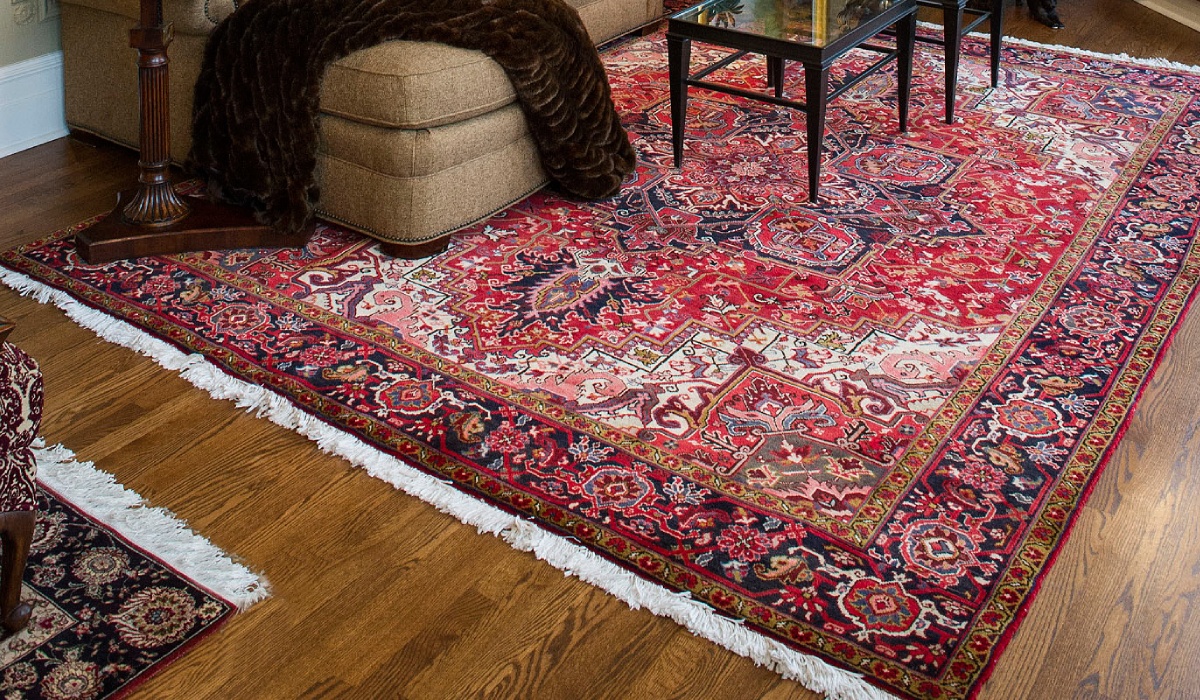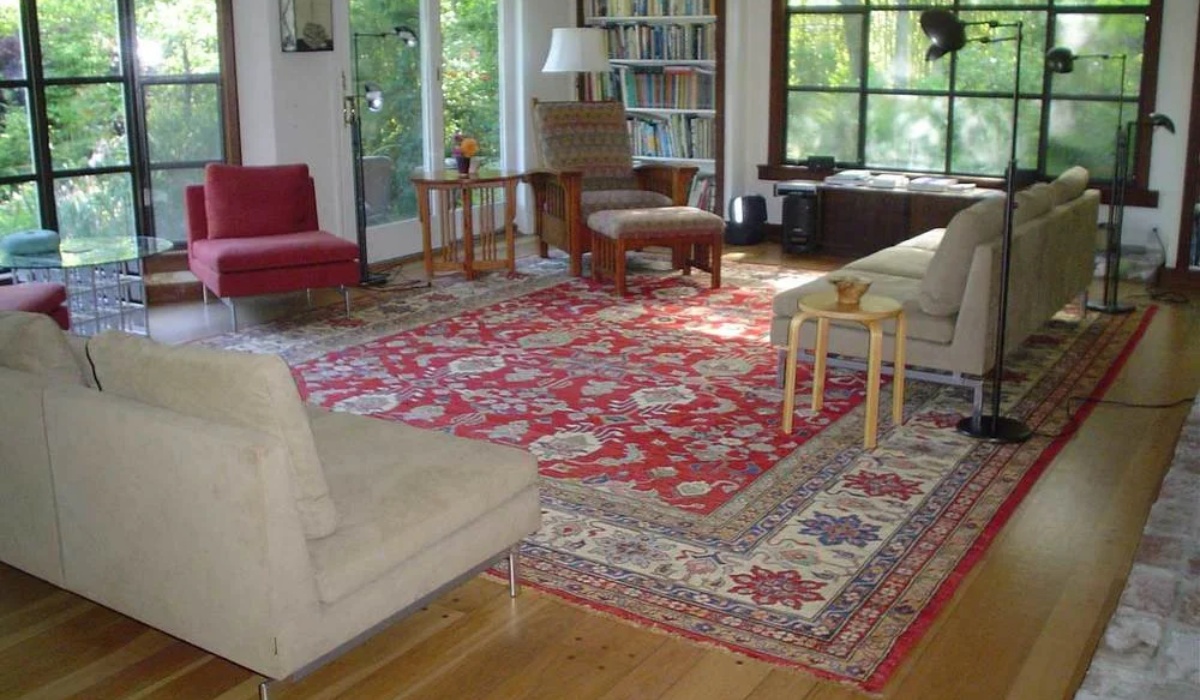Caring for Antique Rugs: Tips to Preserve Heirlooms for Generations

The art of caring for antique rugs is both a responsibility and a privilege for homeowners who are lucky enough to own these timeless pieces. While mass-produced rugs in our contemporary retail stores lack the histories, traditions, and craftsmanship that date back decades or centuries, antique rugs are filled with histories, traditions, and craftsmanship that span decades or centuries. Each strand, knot, and pattern tells not only of the craftsmanship of the artist but also of the cultural tradition of the country where it was made. Whether inherited as a family treasure or purchased as an investment item, antique rugs are worthy of special care to preserve their beauty, use, and worth for years to come. Antique rug maintenance is done with a much different method than newer floor coverings.
These heirlooms are typically constructed from natural fibers like wool, silk, or cotton and are hand-treated using organic dyes that are sensitive to light, water, and cleaning processes. They are destroyed by mistreatment such as the use of harsh chemicals, aggressive vacuuming, or wet storage. On the contrary, by adopting meticulous cleaning techniques, environmental control measures, and collaboration with professional restoration firms, the life span of such pieces of art can be significantly enhanced. In this very detailed guide, we shall discuss all that you should know about how to rescue antique rugs.
Specifically, we’ll discuss safe cleaning practices, methods for preventing common types of damage, the importance of rotating rugs, managing sunlight and moisture exposure, proper storage techniques, and the role of professional cleaning and repair. Learning these tricks not only helps maintain the physical integrity of your rugs but also their history and legacy, which they continue to convey through warmth, description, and beauty to your home for years to come.
Why Caring for Antique Rugs Matters
One of the most important aspects of caring for antique rugs is understanding their unique value and significance. In contrast to contemporary rugs, antiques utilize historical dyes and weaving methods, making them priceless cultural icons. Antiques are more interesting and valuable over time, but more susceptible to degradation, fading, and wear. By keeping antique rugs properly, you not only preserve your financial investment but also provide history and craftsmanship for generations to come.
Cleaning Tips for Antique Rugs
Regular cleaning is at the heart of caring for antique rugs, but it requires a delicate approach. Unlike modern carpets, antique rugs should never be subjected to harsh chemical cleaners or aggressive scrubbing. Instead, use a soft vacuum with a low suction setting and without the rotating brush to remove surface dust and dirt. Blot at once with a white cloth if spills happen, and do not rub because rubbing drives stains further into the fibers.
Professional cleaning is recommended by most experts every few years, depending on usage and environmental conditions. Delicate materials are preserved, eliminating dirt particles that, with time, can erode via fibers, keeping them intact. One of the most critical steps in the upkeep of antique rugs.
Preventing Damage
Another key element of caring for antique rugs is damage prevention. Every day use, heavy furniture, and even pedestrian traffic can stress sensitive fibers. To prevent permanent indentation, use rug pads with cushioning and slip resistance. Felt pads placed under furniture legs also prevent tearing and sharp indentation.
Pets and shoes are also hazards. Promoting a no-shoe policy in the home and getting pet nails trimmed can avoid scratches, snags, and stains. Preventive maintenance is a no-brainer, but it’s one of the best ways to deal with antique rugs and maintain them in their best form.
Rotating Rugs as Part of Caring for Antique Rugs
Rotation is a subtle but efficient technique in the care of old rugs. Over time, areas of a carpet that are more frequently traveled on will deteriorate faster, leading to uneven wear and discoloration. Rotating rugs every three to four months allows you to distribute wear evenly and maintain the overall balance between color and texture.
This process is essential for living rooms, corridors, or entrance halls where rugs are subjected to daily wear and tear. Rotation is also necessary in lesser-used spaces to control natural light exposure. Therefore, rotation of antique rugs maintains their beauty and integrity considerably longer.
Sunlight and Moisture Control
Environmental factors play a significant role in caring for antique rugs. Extended exposure to the sun will cause dyes to fade, mainly when natural plant or insect dyes were used in weaving. Where this is not preferred, position rugs away from direct sunlight or provide window treatments, such as curtains or UV-filtering films, to protect them from fading.
Moisture is a second threat. Excessive humidity can breed mold, and water damage or spills can permanently ruin fibers. Running a dehumidifier in humid spaces and cleaning up spills immediately are necessary precautions. Managing light and moisture are two of the most critical basics of antique rug maintenance.
Proper Storage Techniques
When not in use, proper storage is essential in caring for antique rugs. Rugs must be cleaned before storage to prevent damage from bugs or dirt over time. Rugs, rather than folding, are rolled pile inward to avoid creasing. The carpet is covered with breathable cotton or muslin fabric (never plastic) to keep it dust-free and well-ventilated.
Storage areas should be away from direct sunlight, fluctuating temperatures, and humidity. Cedar blocks or lavender sachets will naturally repel moths. Storage this way provides preventive care for antique rug maintenance, keeping them safe until the rugs are ready for use again.
Repair and Restoration
At some point, rug repair in Berkeley may become necessary in caring for antique rugs. Minor issues, such as loose threads, slight tears, or frayed finishes, must be addressed immediately before they become a bigger problem. Repairing costly rugs yourself is not recommended because incorrect techniques can cause irreparable damage. Instead, engage an antique rug restoration professional.
Trained experts use conventional methods and materials that mimic the original workmanship, so the integrity of the rug is never compromised. Periodic inspections ensure that any issues are identified early on, and professional treatment is an integral part of antique rug care, thereby prolonging their life expectancy.
Professional Cleaning and Maintenance
While routine home care is essential, professional cleaning remains a cornerstone of caring for antique rugs. Professional cleaners utilize specialized machinery and gentle techniques suitable for antique dyes and fabrics. In contrast to machine washing or the use of destructive chemicals, professional cleaning focuses on maintaining the integrity of the carpet while drawing out embedded dirt.
Having a professional cleaning schedule every two years, depending on the frequency of rug use, is an excellent long-term solution. Not only does this procedure ensure the rugs’ longevity, but it also makes them appear new and vibrant. Professional upkeep is typically what distinguishes a rug that lasts decades from one that deteriorates quickly, making it essential in maintaining antique rugs.
Long-Term Benefits of Caring for Antique Rugs
The long-term benefits of preserving antique rugs are significant, both economically and psychologically. Good maintenance keeps the rugs as a valuable investment able to appreciate over time, especially with rare or well-documented pieces. At an individual level, the rugs can be personal or cultural in value, being treated as a family heirloom through generations.
By being kind to antique rugs, you preserve them for future generations and benefit from their craftsmanship. Apart from the monetary value, there is pride in upholding something of historical and traditional significance that enriches your environment. Long-term preservation is indeed an act of giving back; you give to your family and the rug.

Caring for Antique Rugs with Professional Help
Essentially, maintaining antique rugs involves cleaning them daily, avoiding damage, rotating them to ensure even wear, managing sunlight and humidity, storing them properly, and seeking professional cleaning and mending when necessary. These measures serve to safeguard not only the financial value of your rugs but also their craftsmanship and history.
For homeowners who want to go beyond basic care, working with experts makes all the difference. Rose Oriental Rugs in Berkeley is one of the most professional and trusted sources for cleaning and repairing antique rugs, offering specialized knowledge and services that preserve rugs for generations. By combining home care with expert assistance, you’ll ensure your rugs remain treasured heirlooms well into the future.

